Power systems use either DC (Direct Current) or AC (Alternating Current). Let’s examine these systems.
AC versus DC Comparision
Consider the following scenario:
- A power plant is feeding a house located over 1000feet away.
- The house demands 100Amps current at 480V.
- The plant generates 100Amp at 480V
- Assume a DC system and an AC system with the AC system employing a transformer rated 480/4800V near the generating station and a 4800/480V transformer near the house. See the figure below.
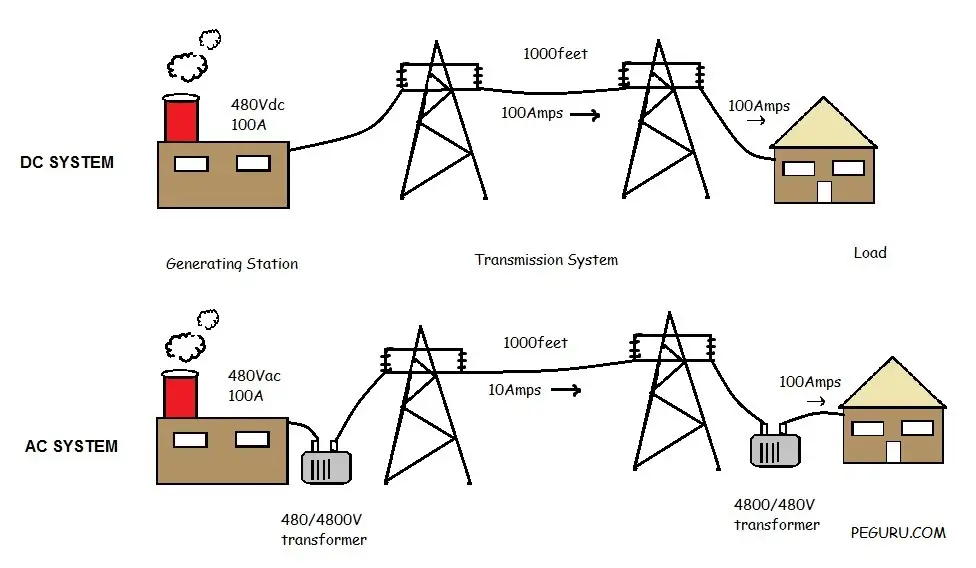
Let’s see how a DC system stacks up against an AC system.
| DC SYSTEM | AC SYSTEM |
| 1. To carry 100Amps over the line, a larger cable (in diameter) will be required for the DC system. | 1. After transformation, the current on the power line will be 10Amps. A smaller cable will be required. |
|
2. Larger cable means lower conductor resistance. Typically, 0.15 ohms per 1000feet can be used for a 100Amp conductor (per AWG). In which case, Voltage Drop (VD) across the line = 0.15*100 = 15V. |
2. Smaller cable (in diameter) means higher resistance. Typically, a 1.5 ohms per 1000feet can be used for a 10Amp conductor. In which case, Voltage Drop (VD) = 1.5*10 = 15V. Same as a DC system. |
|
3. The DC generator must generate 480V plus 15V to deliver power to the house. At the house, the voltage, therefore, will go from 495V at no-load to 480V at full-load. A 15V variation. |
3. Allow taps on the transformer to raise the voltage by 15V to obtain 4815V. At the house, this is equivalent to 481.5V. A 1.5V variation from no-load to full-load. Engineers call this variation of voltage as the Voltage Regulation (VR). An important factor in the power system. The less the VR the better the system. |
|
4. Losses in transmission system = VD*Current (in watts) = 15*100 = 1500 watts |
4. Losses in transmission system (in watts) = 15*10 = 150 watts. Ten times less than DC transmission. |
|
5. Transformers do not operate with DC supply wired to it. It will short-circuit. The only way to step down the voltage for distribution is through a motor-generator set or a rotary converter – an inefficient process. |
5. Transformers operate at 99% efficiency at full load. Used throughout the AC system. |
DC Power System
A DC system cannot be applied to all areas of the power system. Because the DC current generates a constant magnetic field, it’s not easy to transform the voltage (by means of induction). Which means, it is not suitable for distributing power. However, once the power is delivered to a home, you can derive DC power using a power adaptor (which contains a tiny transformer and a rectifier) supplied by your device manufacturer.
At the bulk transmission level, there is a limited application of the DC system. To derive extra high voltage DC power (from AC power) and then invert it back to AC, you need costly converter stations, typically in a $100million dollar range. In North America, the converter stations tie interregional power systems at their boundaries. For instance, the western interconnect (in purple) is tied to the Eastern interconnect (in blue and green). The Eastern interconnect is tied to Texas (in grey) and Canada (in white).

Separating interregional systems as shown makes sure any system disturbances (in voltage magnitude, fault current, or frequency fluctuations) do not get transferred.
If you can digest the cost of two converter stations, there are tremendous savings obtained in the transmission line infrastructure. Check this Alstom brochure for more info.
Because of the economics of this technology, the current application for DC systems at bulk power is to
- apply on extremely long transmission lines (i.e. saving from transmission line infrastructure goes towards converter stations)
- integrate renewable energy. For instance, wind power generated in the Plains of mid-west America can be exported to the West or East coast. The hydropower from the north-west or Canada can be exported to wherever there is a need.
In DC systems, the power delivered to the load is given by:
P=V*I (watts)
Where, V = R*I (Ohm’s law)
Losses incurred in a DC system are purely resistive (there is no inductive reactance!). They are emitted as heat, given by I²R (Joules).
Advantage of a DC power system:
- Simple system. Easy to understand. No abstract concepts like reactive power involved, unlike AC systems.
- Suitable for HVDC transmission. Fewer transmission lines required to transmit DC power.
- It can be used to link two asynchronous AC systems.
- Undersea power transmission is feasible using DC lines. It does not have a capacitive effect as AC lines have under seawater.
- DC currents do not fibrillate your heart as AC currents do. It just stops it. Heart fibrillation is dangerous than a heart that has stopped beating momentarily.
Disadvantage of a DC power system:
- DC system is not suitable for distributing power.
- HVDC systems currently in operation are derived from AC systems using expensive converter stations. Cost savings from reduced transmission lines (especially long-distance ones) in an HVDC system go to building the expensive converter stations.
AC Power System
Click on the image below if you fancy AC power equations.
AC Current, unlike DC current, is a time
The real power described in the equation (to the left) does the actual work in the power system. It’s what drives the motors, lights the bulbs, and so forth. The reactive power, on the other hand, does not do actual work. But it is essential, none-the-less. It’s primarily used to magnetize the transformers, motors, any coil product, transmission lines, etc. In other words, it facilitates the transfer of real power by addressing the need for each equipment. Still confused? Check the video below that best describes this phenomenon.
Without reactive power support to long transmission lines (from the generators, capacitor banks, etc.) there will be a significant voltage drop at the end of the lines.
Why three phase AC power system and not four, five, or six phases?
AC systems are mostly designed as three-phase systems. You can deliver more power with a three-phase system than a single or two-phase system but there is no advantage in using more than three phases. It is the break-even point. Employing more lines equates to higher infrastructure costs.
AC currents oscillate 60 times a second (in the USA). This is in the electrical domain. In the mechanical domain, this equates to 1800 rpm for a 4-pole generator. If more than one 4-pole generator is connected to the power grid then all these generators must rotate at 1800 rpm to produce AC power at 60Hz. If any one generator speeds up or slows down (due to system transients) then remedial actions need to be taken immediately (either isolate the fault or disconnect the out-of-step generator). Read more about this in this article.
Advantage of an AC power system
- Very flexible system. It can deliver power to loads over vast distances using transformers.
- AC generators are sturdier and easier to build than DC generators. DC generators need brushes and commutators to generate DC current.
Disadvantage of an AC power system
- Very hazardous since it causes heart fibrillation. Ungrounded to voltage surges.
- Complex system. Computer with power system analysis software (such as EMTP, ETAP, PTW, etc) has saved engineers.
- System stability is crucial. The system goes down if interconnected generators do not generate at the same frequency (i.e. not synchronized)
Summary
DC systems are great for moving bulk power at really high voltages. They are just not feasible for power distribution, however. AC systems provide easy means to deliver power to remote users from remote generating stations. A mix of both technologies is suitable to build a power system.

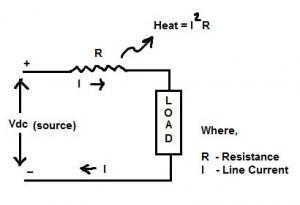
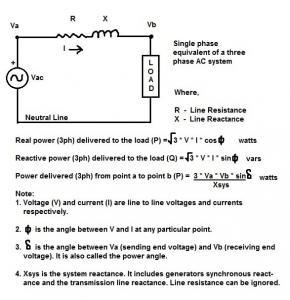
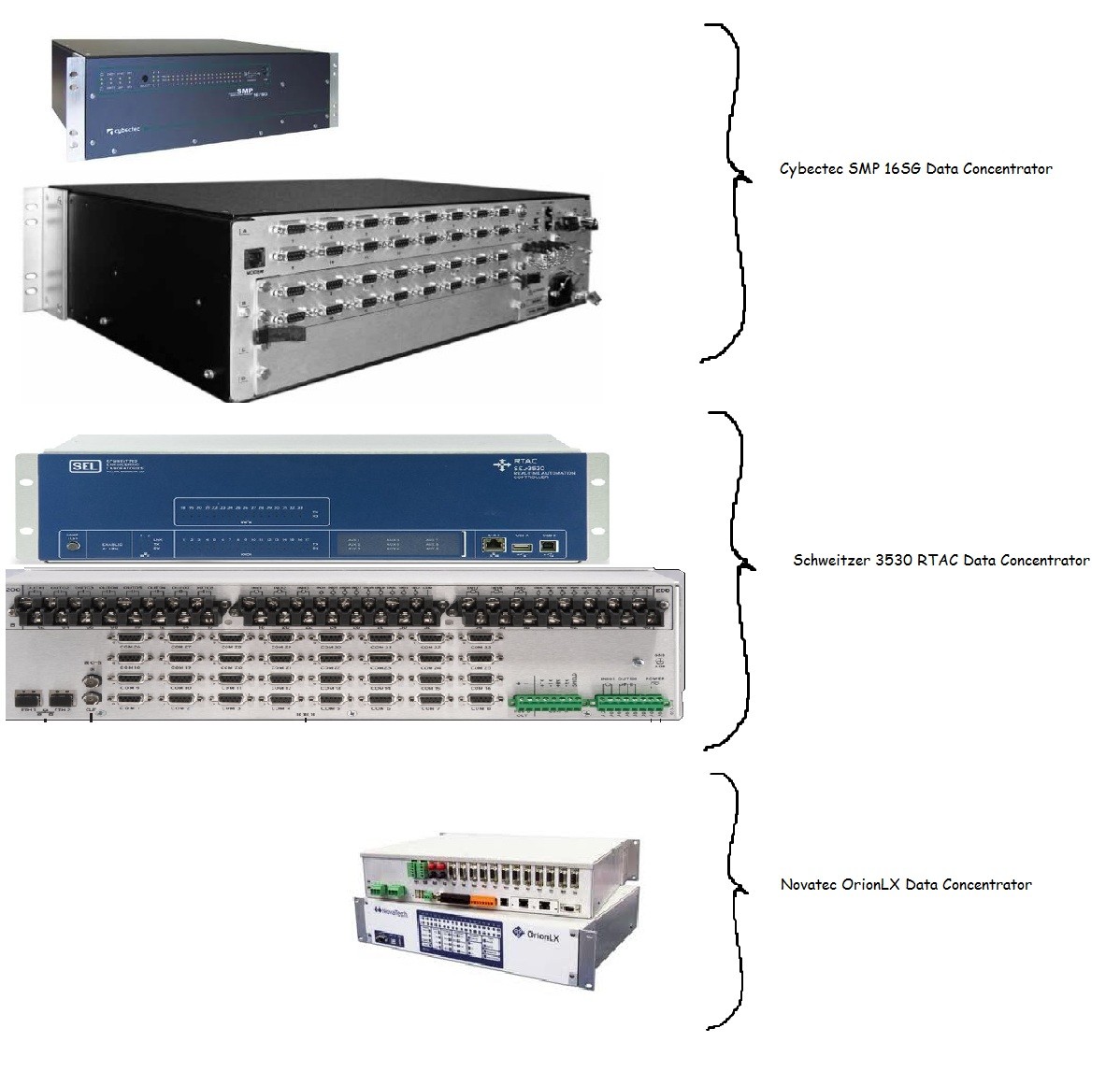
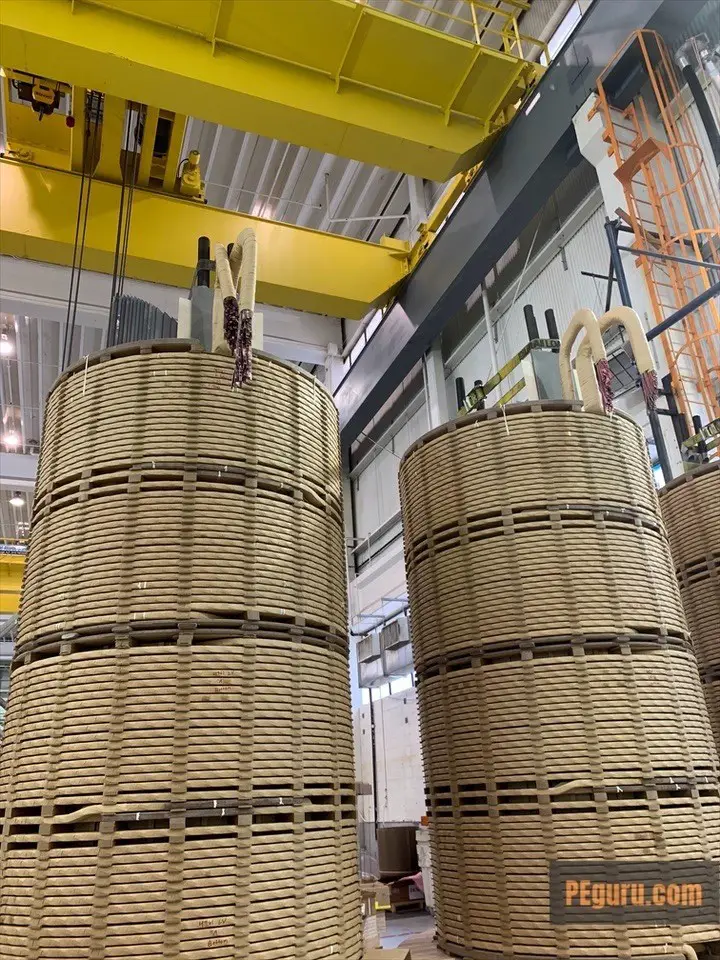
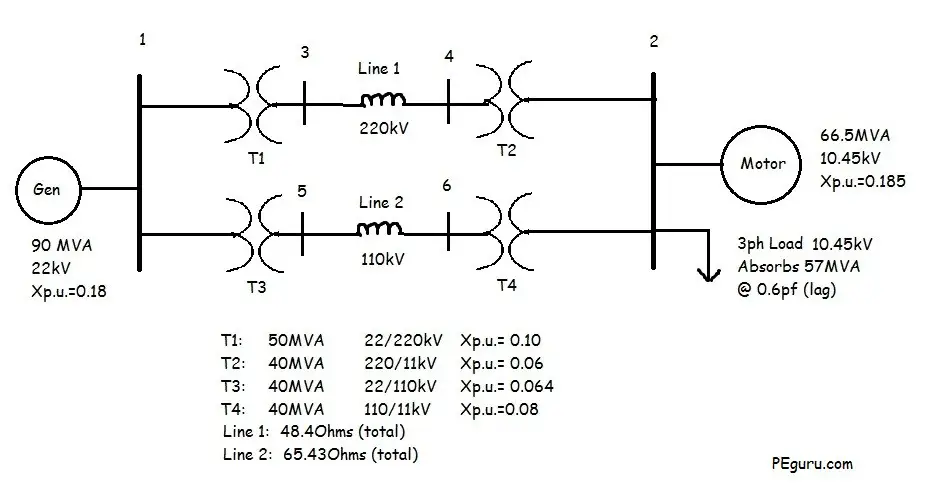
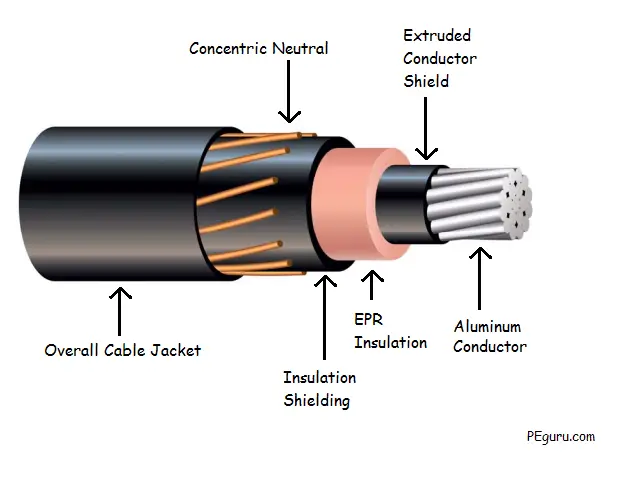
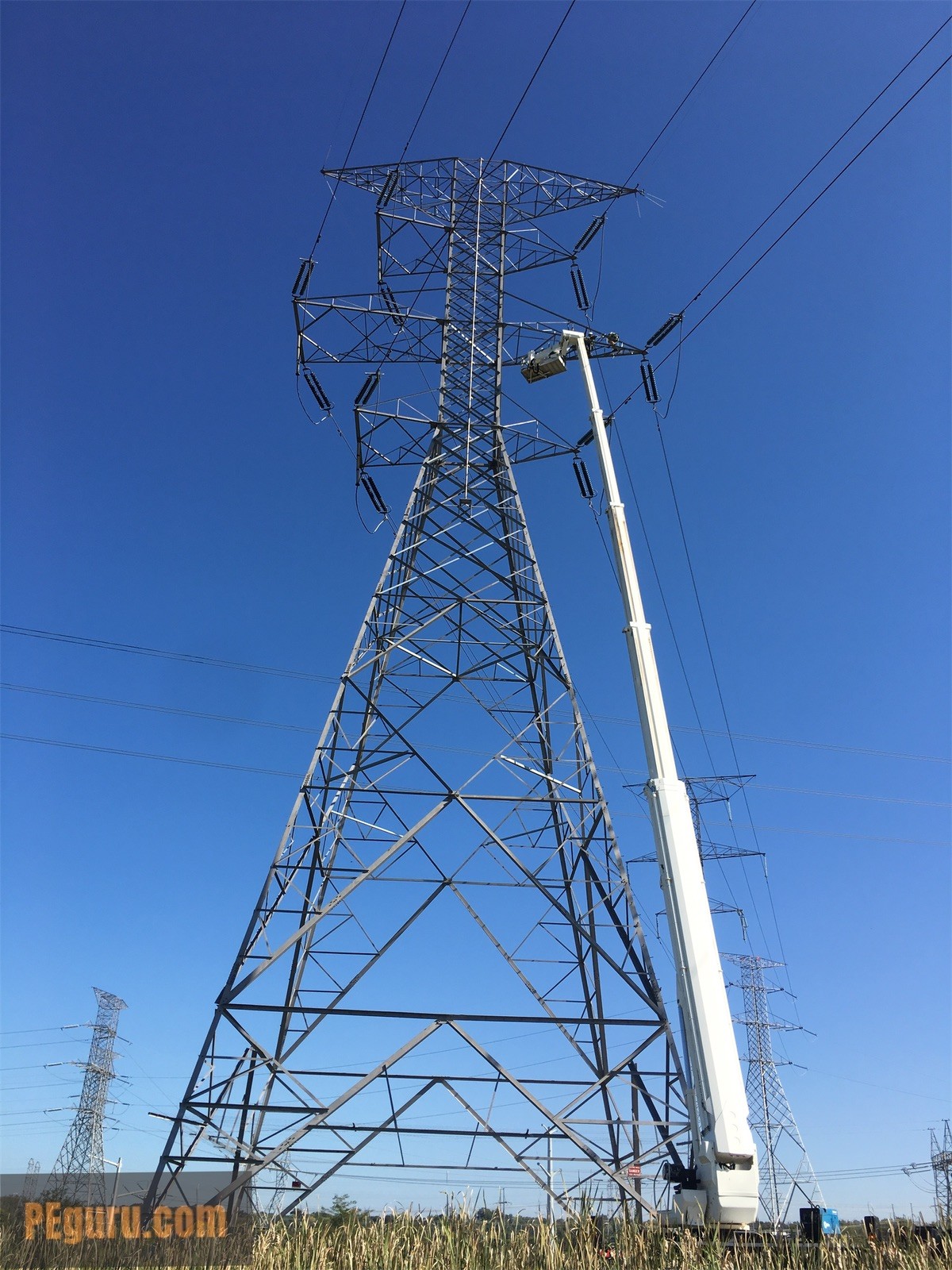

Pingback: What Size Inverter Does My RV Need? - Climatebiz
Pingback: dc vs ac systems - seekanswer
Thanks a lot for the post….
Nice comparison… This is exactly the reason we ended up with AC instead of DC about 100 years ago!
However, you are rather comparing a low voltage network with a high voltage network and not AC with DC. If you consider also an AC system without the transformers, you will see that it is not the DC itself that gives the increased losses… Today there are efficient ways to do the same increase in voltage with DC/DC converters that will make sure you will have lower losses in your DC system than in the AC-system!
Thanks, for a home solar PV system the latest technology gives DC output. Is it still efficient to have for example two strings of 21a DC over 200feet using #8 THHN cable? or is it better to run (post inverter) AC on one string with 42a on #4?
Great explanation-especially for someone like me who is in the industry but not an Engineer. Looking forward to reading more!
Hi,
Good, simple explanation and illustratration of difference in ac and DC systems.
Very helpful and informative even for a non-professional. Thanks a lot for the post.
Very much helpful and easily understandable thanks pe guru
Hi,
Thanks for this posting. It is really helpful.